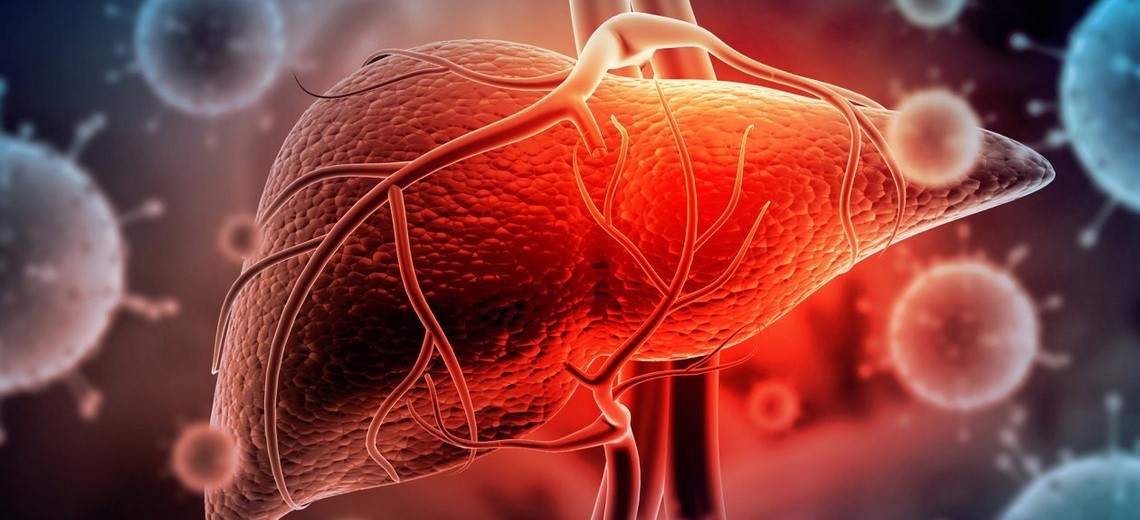
Hepatitis is inflammation of the liver.
This condition can be self-limiting or lead to the development of fibrosis (scarring), cirrhosis, or liver cancer. The most common causes of hepatitis in the world are hepatitis viruses, but it can also be caused by other infections, toxic substances (such as alcohol and some drugs), and autoimmune diseases.
There are 5 main hepatitis viruses, called types A, B, C, D and E.
All of them lead to the development of liver disease, but there are significant differences between them.
Hepatitis A and E are usually caused by eating contaminated food or water. Hepatitis B, C, and D usually develop as a result of parenteral contact with infected body fluids. Common modes of transmission of these viruses include invasive procedures using contaminated equipment and, for hepatitis B, transmission from mother to child during childbirth, from family member to child, and through sexual contact.
Acute infection may have limited symptoms or no symptoms, or may include symptoms such as jaundice (yellowing of the skin and eyes), dark urine, fatigue, nausea, vomiting, and abdominal pain.
Hepatitis A virus
Hepatitis A virusis present in the feces of infected people and is most often transmitted by consuming contaminated food or water.</span >
In many cases, the infection is mild and most people recover completely and remain immune. However, hepatitis A infection can be severe, lead to various complications and be life-threatening.
Most people in areas of the world with poor sanitation are infected with this virus. There are safe and effective vaccines to prevent hepatitis A. You can reduce your risk of infection by practicing good hygiene and sanitation practices and avoiding drinking water that may be unsafe.
Hepatitis E virus
The Hepatitis E virus, like hepatitis A, is transmitted in most cases by consuming contaminated food or water. It can also be transmitted through the consumption of raw shellfish that have been in water contaminated by sewage. Hepatitis E often leads to hepatitis outbreaks in developing parts of the world.
Safe and effective vaccines have been developed to prevent HEV infection, but they are not widely available. You can reduce your risk of infection by following good hygiene and sanitation practices and avoiding drinking water that may be from unsafe sources.
Hepatitis B virus
TheHepatitis B virusis transmitted through contact with infected blood, semen and other body fluids. It can be passed from an infected mother to her child during childbirth or from a family member to a young child. Transmission can also occur through transfusions of blood and blood products contaminated with hepatitis B virus, injection from contaminated equipment during medical and non-medical procedures, and injection drug use. There is a safe and effective vaccine to prevent HBV.
If you have not been vaccinated, you can reduce your risk of infection by avoiding promiscuous sex and not sharing needles or objects such as toothbrushes, razors, or nail clippers that belong to an infected person. It is also recommended to avoid getting tattoos or body piercings in unlicensed establishments. Babies born to mothers infected with hepatitis B should also be vaccinated within 12 hours of birth as this can prevent the infection from developing, which is more likely to develop into chronic hepatitis B. Medicines such as interferon alfa are available to treat hepatitis B , peginterferon, as well as various antiviral drugs that slow down the reproduction of the virus and sometimes lead to a cure.
Hepatitis C virus
The Hepatitis C virus is also mainly transmitted through contact with infected blood. This can occur through transfusions of blood and blood products contaminated with the hepatitis C virus, injections from contaminated equipment during medical procedures, and injection drug use. Sexual transmission and transmission of infection during childbirth are also possible, but this occurs much less frequently. There is no vaccine against viral hepatitis C. Treatment of chronic viral hepatitis C is aimed at destroying the virus. It often involves taking a combination of pegylated interferon and ribavirin, and potent direct-acting antivirals (with or without interferon) are increasingly used. People of different genotypes respond differently to treatment, some more successfully than others.
Hepatitis D virus
The Hepatitis D virusis transmitted through contact with infected blood and can only infect people who are infected with hepatitis B. Dual infection with hepatitis D and hepatitis B can lead to more severe illness and worse outcomes.
Safe and effective hepatitis B vaccines provide protection against hepatitis D infection. There is currently no effective antiviral therapy for hepatitis D.
UZ “Brest City Clinic No. 2”







